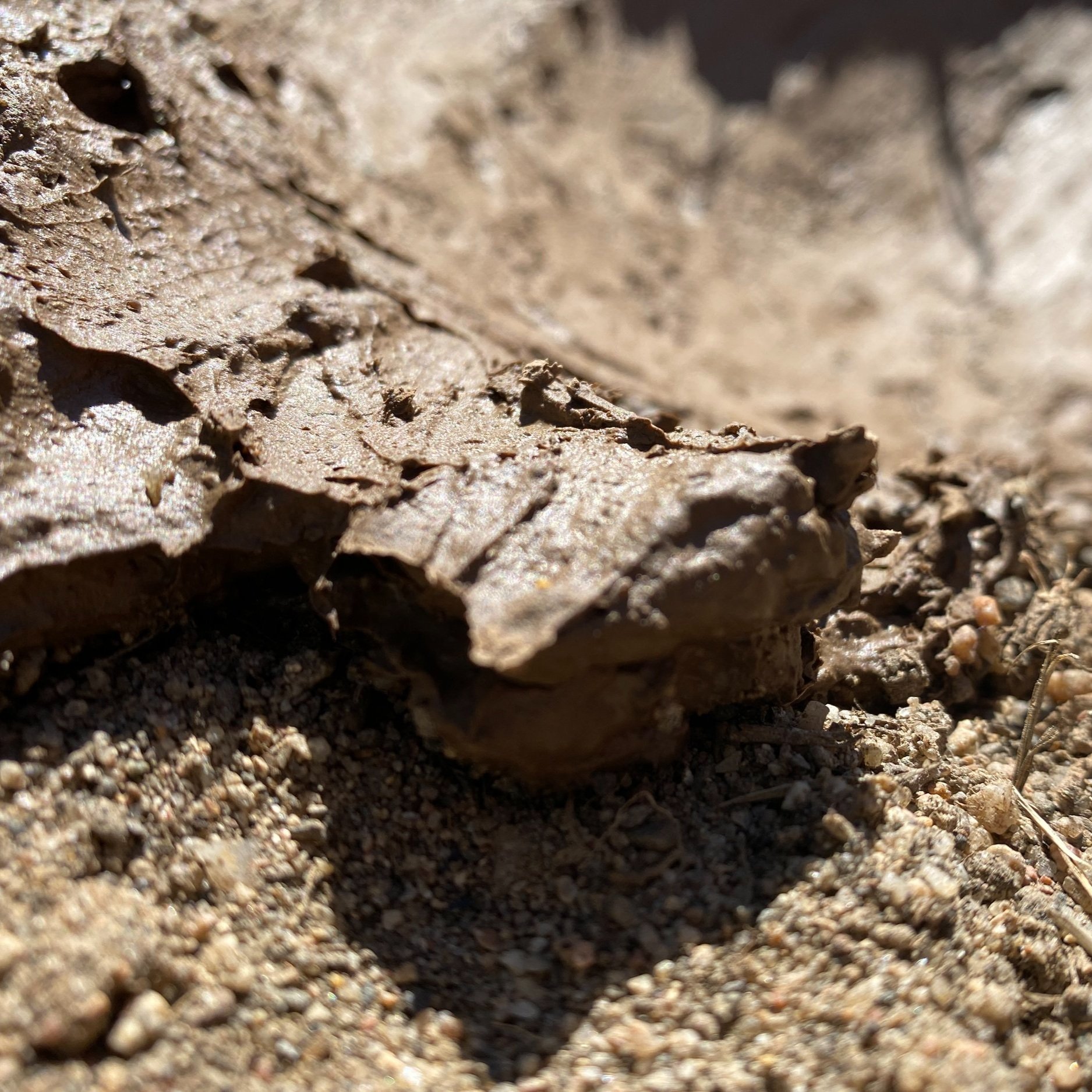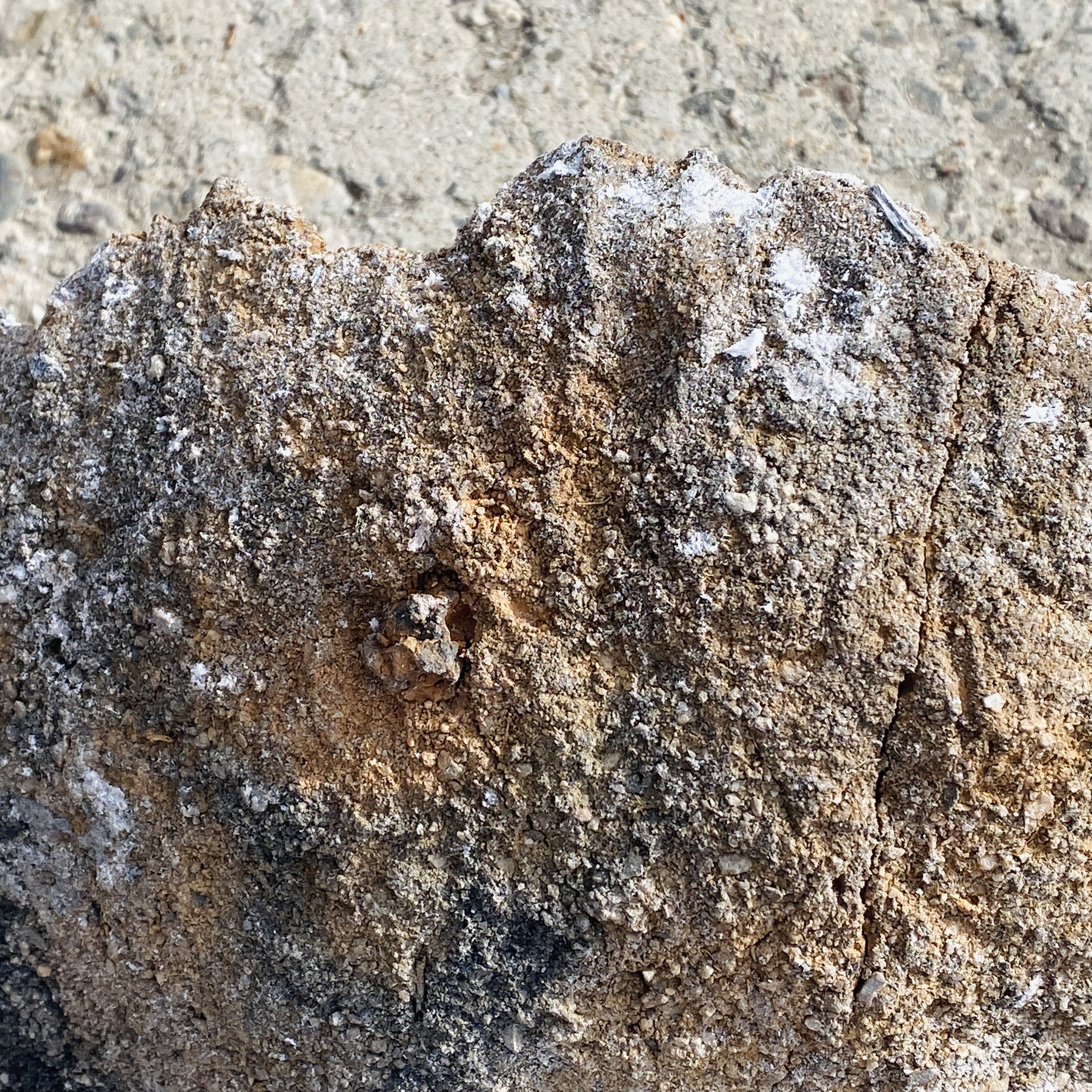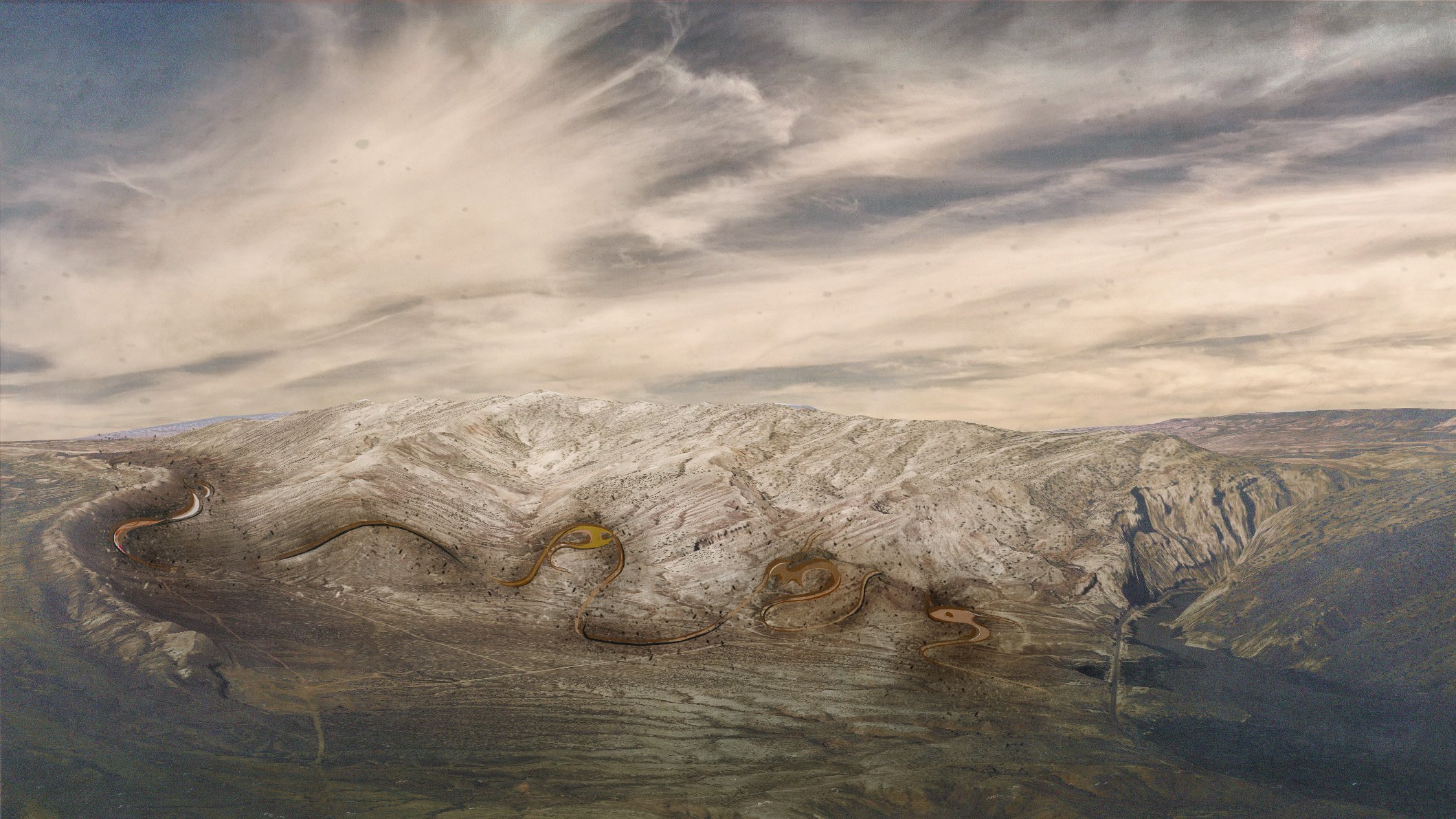
Timeless Materials
In the Big Horn Basin, an extensive repository of movement, time, and space has collected. One can see the earth’s stacked geologic past. Trapped and sealed beneath salt, sediments, and time, oil, gas, and coal reside. They are the degradation of materials lost, the transformation of a previous world giving life to the next. Each source of heat bringing material revolutions and societal transformations. First peoples have crafted the earth, artifacts turned to relics with time. These light the experience and memory of place and people. Human touch is tied to geology, geography, and process. Clays are remains of a world unknown.
MIT OPTIONS STUDIO - A Carbon Institute in Big Horn Basin, WY
Taught By Mark Goulthorpe
Spring 2021
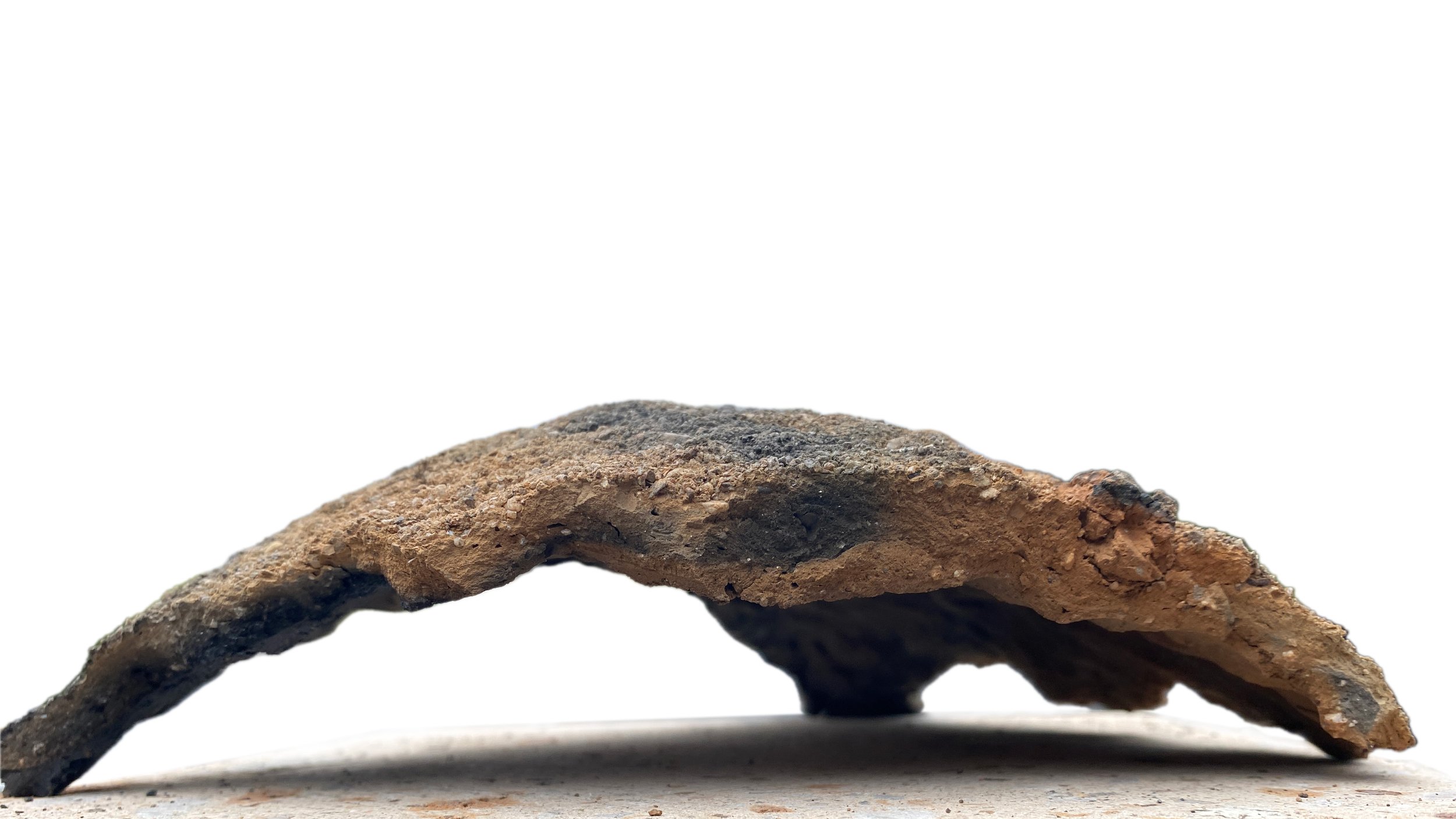
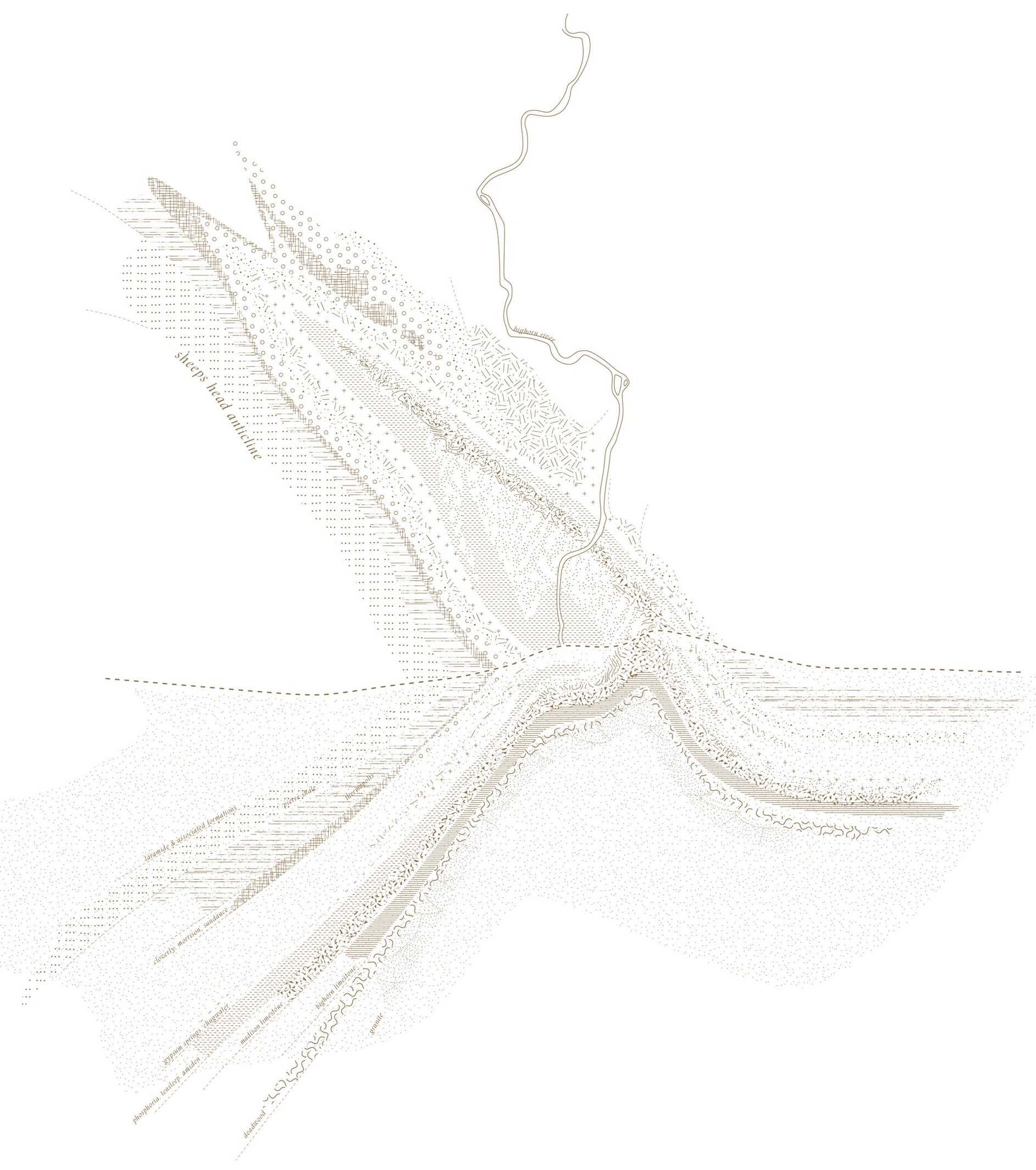
Sheeps Head Anticline is a fold that has been rubbed raw, brushed away by wind and water. Its erasure reveals a colorful stratum, a geologic record with layers giving way to a ghost. Sediments express time of settling, rate of crystallization, and conditions of metamorphization.
Geologic memory is articulated through materiality and form, provoking connection and questioning linear time. How can time be collapsed, rumpled, and pinched to generate relationships across space and time. Connection between geologic material events, extractive practices, and making with the earth exposes eloquently thin ceramic composites, spatializing materiality and time.
Non-metallic and non-organic, clay is swirled into a slurry, whose phase change gives way to structure. It is strong in compression and weak in tension and shear. That is, until, reunited with a sibling that it once trapped and hugged to the earth’s core. Just as horsehair has held plaster, straw has reinforced clay, and wattle lattices have supported daub, carbon nanotubes strengthen ceramic construction. They extend into the landscape just as the vault itself reflects the earth from which it rises. Sediments and nanotubes once nestled and entangled within the pores of one another beneath the earth are once again strengthened and embedded, enclosing space on the earth’s surface.
Hydrocarbons are pyrolyzed into carbon nanotubes, deployed along isocurves, and cloaked in clay. These materials meld as timeless as the sculpted figures and vessels of times past. They are reunited and strengthened through heat, fusing and sintering. Clay becomes matrix and matrix becomes ceramic; a material born from fire.
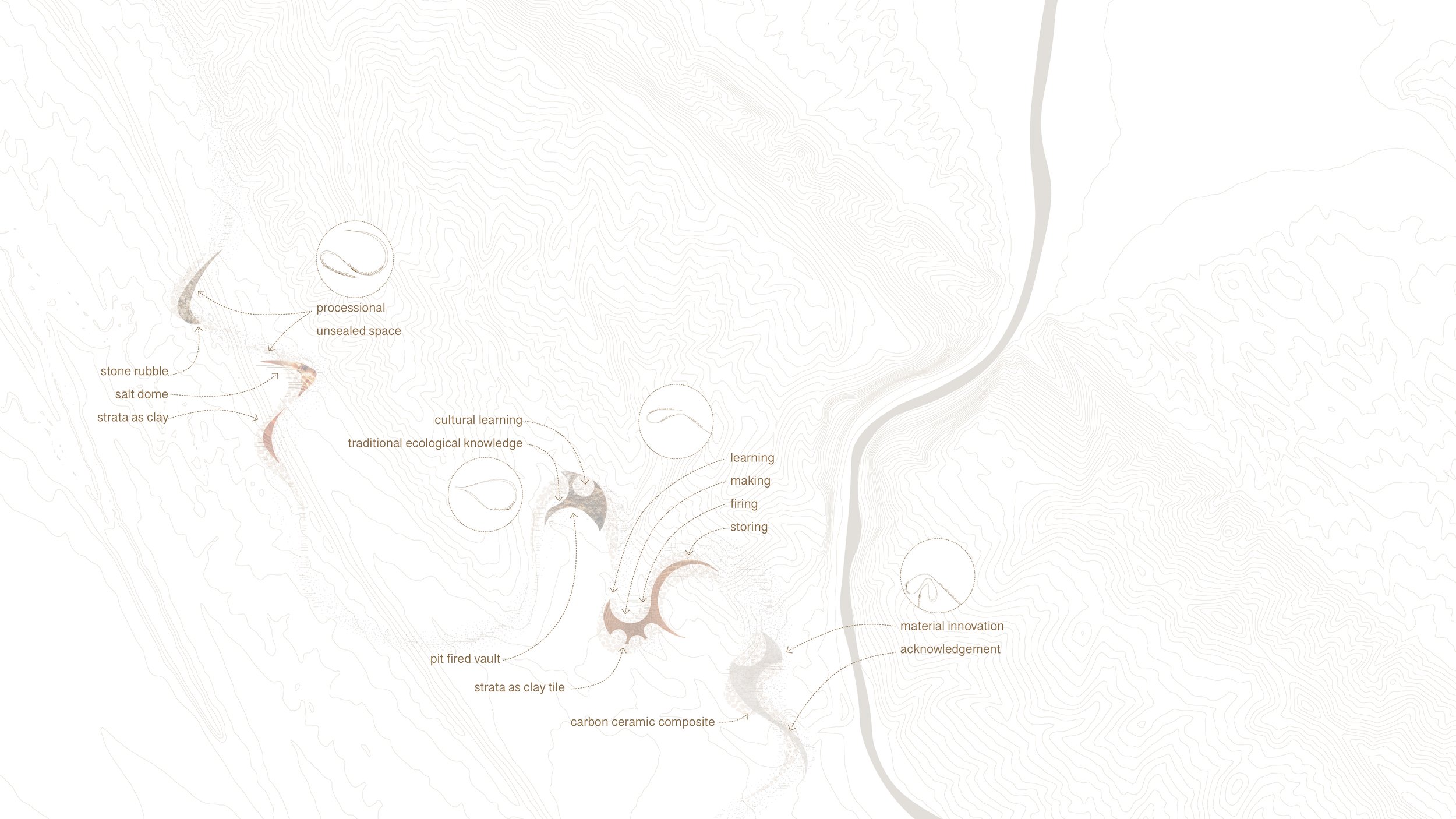
Collapsing the formation of Wyoming oil and bentonite clays takes shape as a compressed salt dome, where oil was once trapped before extracted. Processes of weathering are reflected in form, gradients are engaged, and structures dictated by pigmented sensibilities. The first peoples existence for 10 thousand years yields a clay vault formed over timber and tree thinnings, hardened through their burning and disappearance, giving space to study past peoples, their traditional knowledge, and understanding of working with the earth.
The discovery and extraction of hydrocarbons gives way to a space that requires geologic understanding. The hands will collect a repository of minerals and sediments for geologic learning and cultivation of material intelligence. Spaces emerge for the study of the earth’s processes, its formations, its stewardship, and its material deployment. Facilitation of earth system understanding yields an outpost for geologic field camps, facilities for collection, safe-keeping, and making.
The pressure of extractive industries, the consequential removal of Native Nations, and the impending doom of climate change yields structural optimization through carbon-ceramic composites. A disproportionate burden of popular practices of environmental degradation falls on those of minoritized populations, often Native Nations, descendants of these lands. One must pass through a sinuous curve of acknowledgment for past stewards of these lands prior to contemplating the innovative deployment of carbon as a tool in the battle against a warming planet, material depletion, extraction, and the prioritization of economic output.
The institute will promote a logic of feedback systems. Acts of removal will be countered with gifts to the landscape. The loop, the process, is the point. The institute stimulates a timeless way of building. Within this institute, one ponders how to dwell, how to embrace environment, materiality, and connection. Relationships form with earthly memories of timescales beyond that of human life. One can feel rooted in the geologic process and human presence in the landscape. The material culture of clay emerges not only in the architecture, but the programs that take place here. Building is a reflection on community values, constructing a material culture sensibility, and cultivating an ethos of reciprocity.



